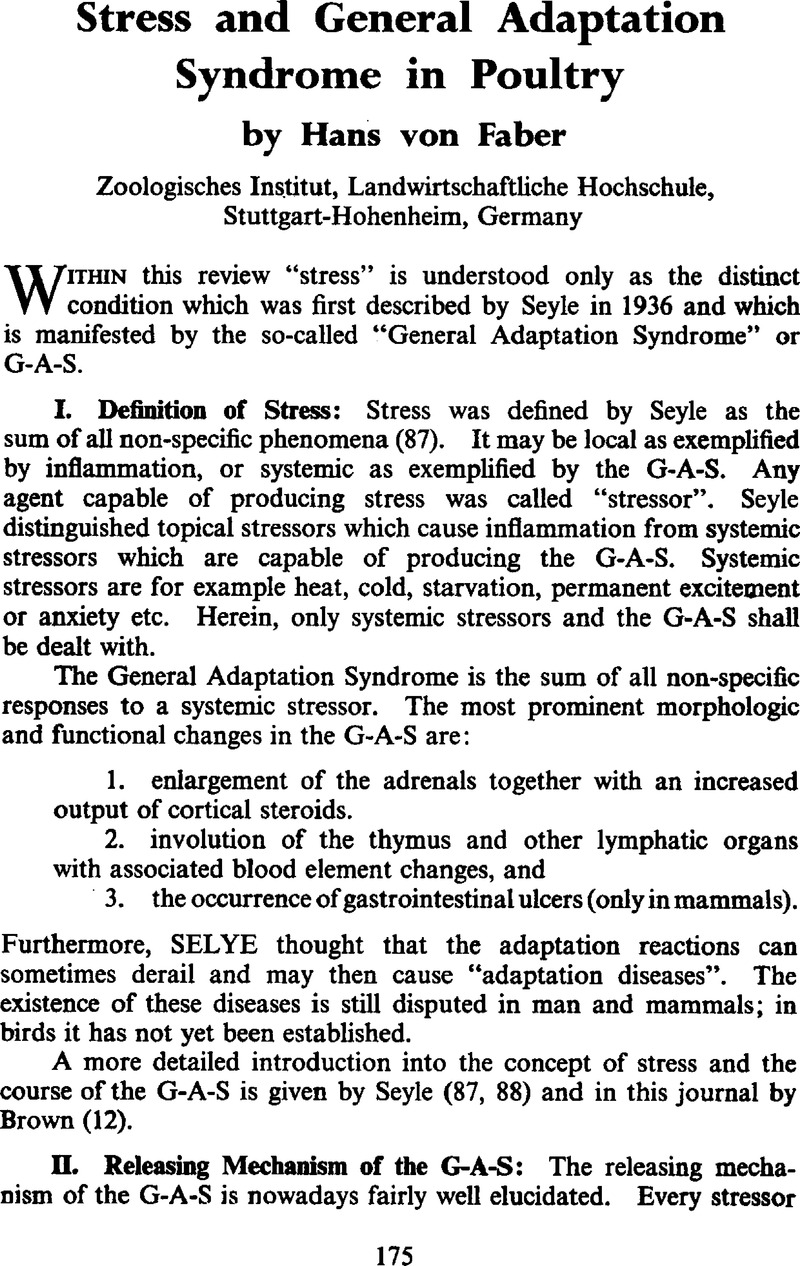Crossref Citations
This article has been cited by the following publications. This list is generated based on data provided by Crossref.
Bierer, B.W.
Carll, W.T.
Eleazer, T.H.
and
Barnett, B.D.
1966.
Gizzard Erosion and Lower Intestinal Congestion and Ulceration Due to Feed and Water Deprivation in Chickens of Various Ages.
Poultry Science,
Vol. 45,
Issue. 6,
p.
1408.
Thaxton, P.
Sadler, C.R.
and
Glick, Bruce
1967.
The Physiological Response of New Hampshires to High Temperatures ,.
Poultry Science,
Vol. 46,
Issue. 6,
p.
1598.
THORPE, W. H.
1969.
Welfare of Domestic Animals.
Nature,
Vol. 224,
Issue. 5214,
p.
18.
Thaxton, P.
and
Briggs, D.M.
1972.
Effect of Immobilization and Formaldehyde on Immunological Responsiveness in Young Chickens ,.
Poultry Science,
Vol. 51,
Issue. 1,
p.
342.
Vestergaard, Klaus
1981.
Das Verhalten von Hühnern / The Behaviour of Fowl.
p.
115.
BRAKE, J.
BAKER, MICHAEL
MORGAN, G.W.
and
THAXTON, P.
1982.
Physiological Changes in Caged Layers During a Forced Molt.
Poultry Science,
Vol. 61,
Issue. 4,
p.
790.
CERNIGLIA, G.J.
HEBERT, J.A.
and
WATTS, A.B.
1983.
The Effect of Constant Ambient Temperature and Ration on the Performance of Sexed Broilers.
Poultry Science,
Vol. 62,
Issue. 5,
p.
746.
DAVIS, G.S.
and
SIOPES, T.D.
1985.
The Effect of Light Duration on Turkey Poult Performance and Adrenal Function.
Poultry Science,
Vol. 64,
Issue. 5,
p.
995.
Donaldson, W.E
Christensen, V.L
and
Krueger, K.K
1991.
Effects of stressors on blood glucose and hepatic glycogen concentrations in turkey poults.
Comparative Biochemistry and Physiology Part A: Physiology,
Vol. 100,
Issue. 4,
p.
945.
2002.
Birds of Prey.
p.
295.



